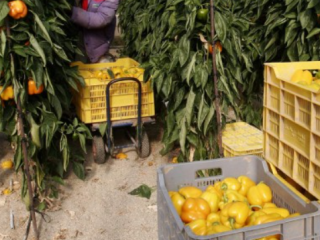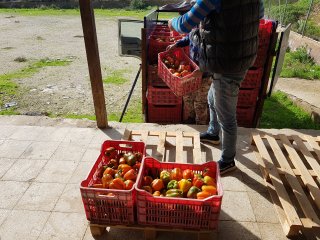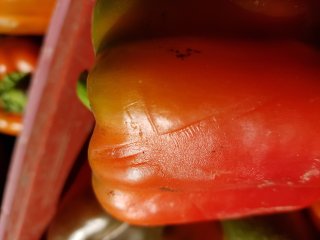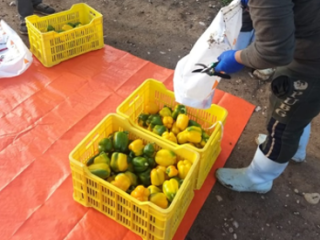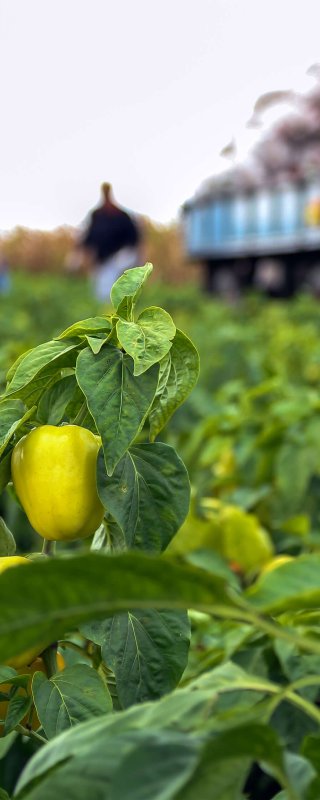
Harvest practices for peppers
Proper harvest of peppers is an essential start for a successful supply chain. The performance of the harvesters is critical to delivering a good quality product. First of all, picking at the right maturity is important to develop a satisfactory final eating quality. Picking and further handling must be done carefully to avoid bruising and other damage to the product. The use of clean and suitable materials such as harvest crates also serves this purpose.
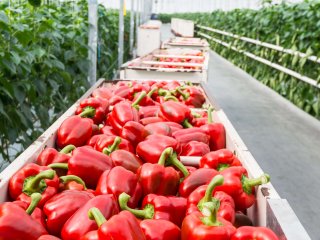
Harvest of peppers
All peppers start as green peppers. Depending on the variety, they will turn to red, yellow, purple, white or orange afterwards. The fruits may be harvested green or colored. Since the fruits continue to colour, they can be harvested before reaching their final marketing colour. They are often picked when 75-90 % of the end colour. Generally, the change of colour of the red peppers is faster than the yellow peppers. The percentage of colouration depends mainly on the length of the chain, the shorter the chain, the more colouration we want at harvest. But they are all picked while crispy and firm. A fruit that is not mature enough yet will feel softer. Determining the right harvest moment is therefore important for the eating quality and marketability of the peppers. The size of the diameter of the fruit and the number of sections will be used to grade the fruit.
Attention points for harvest of peppers
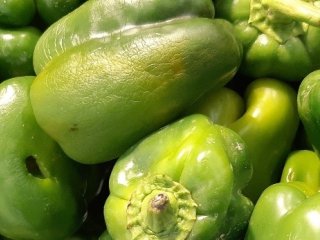
Preventing moisture loss at harvest
Peppers are very sensitive to moisture loss causing them to shrivel. Limiting the time between harvest and cooling to maximum a few hours is important but so is keeping them in shade and covering stacked field crates with a clean plastic sheet to avoid the reduction of relative humidity.
